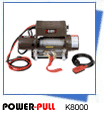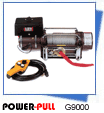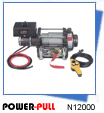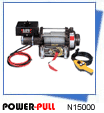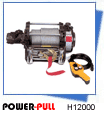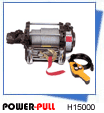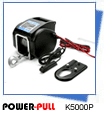Road-Test Mighty 'Mog,路测UNIMOG
Well this must be the ultimate off road tool, the best thing you could ever drive, the most incredible machine for climbing the most impossible hills and traversing incredible terrain ?
In a word, YES.
It's clear that in 4x4 circles mention UNIMOG and there's a general agreement that if there was a enough money around we'd all forget the conventional 4x4 and buy one ! Living with that decision afterwards might be interesting. The UNIMOG is a special kind of 4x4, one designed to "work" for it's living, not a dual purpose Town and Country 4x4 that does the school run, tows the caravan and gets you in and out of the Gymkhana field. It's also not going to make you favourite at the next Off Road Vehicle Trial. At around 3.5 tons it's rather heavier than even a Land Rover 101, and with 450mm under diff ground clearance, 22.5 x 20 tractor section tyres it may make the trials course look rather "tame".

We were lucky enough to have the opportunity of living with one for three years, during that time rather a lot of off-road work was carried out mainly in forests and moorland areas. Let me tell you what kind of Unimog, for ours was a U900, and there are loads of different models. We won't delve into the technicals here (we'll leave that to a future article when then is more space ... ) just give you a flavour of Unimog ownership.
Speed is not the strong point of this machine, but with 90 bhp (hence the designation U - "unimog" 900 - "90" bhp) under the bonnet from a gorgeous six cylinder 5.6 litre Mercedes diesel it's all about torque. Six forward speeds and two reverse, you can start in 5th and slip into 6th at 10 mph if you're feeling like you want an automatic. More restrained methods are starting in third and simply enjoying the power. It's not the kind of heart throbbing rumble of a tuned V8, rather a mellow growl which escalates into an ear deafening roar at around 2500 rpm by which time you are ready to change gear.
But remember, the Unimog is a working machine, designed to do all the tasks that a four-wheel-drive tractor will achieve and drive on the road at speeds of up to 50mph to the next job, which is ideal for forestry and agricultural contractors. Come to think about it, it is also great if you only live a short distance from the "great outdoors" and want the ultimate vehicle when you get there.

Forestry tracks previously the sole domain of Forwarders, the huge 6x6 hydrostatic driven machines which carry the felled timber to the road-side, were simple fayre for the Unimog. Waist deep ruts, branches and tree stumps were no problem. Selectable four-wheel-drive and cross axle differential locks on both axles result in complete 4x4 grip enabling the machine to traverse the most arduous ground conditions without faltering. Just pull up the lever for the diff locks, select 2nd gear and the machine does the rest. Power steering eases the struggle generated by those large and awkward tree roots and stumps, a slow steady route always guaranteed forward motion. Well, just look at that photograph, the tree trunks look like sticks !
Clambering about in the woods was always great fun, knowing that you had a front mounted power take off driven winch was a good feeling, although it was only every used to rescue other vehicles, ranging from a side snagged Toyota Hilux to an overturned Steyr Pinzgauer. The Hilux story was an interesting one. In one particular stretch of forest a "green lane" makes a brief sortie through the conifers, a slight side angle, lots of pine needles and plenty of rain meant for interesting grip. Despite Mud Terrains the Hilux slid down and sideways and became wedged broadside and fore and aft in the trees. With a little thought and a very slow pace (about 45 metres an hour) we manoeuvred the Mog into position. With a short rope we dragged the front out sideways and without any panel damage extricated the Hilux from its predicament. We're only sorry we never took any photographs of that one.

In Europe the Unimog is a regular site on the roads during the winter months clearing snow and applying road salt, and various models are equipped with snow-blowers which are relied upon to clear the more remote roads in mountainous regions. Having heard of the Mog's incredible ability in the snow it was only a question of waiting for the excuse to try it. The first winter's snow had us out in an instant. At 1,000 feet up in the mountains there's usually a realistic amount to play in, and on this occasion we travelled especially to a private location which climbed to 2,000 feet. Well the snow was incredible, freshly fallen and deep, an ideal test for the Unimog. It's amazing just how much power is sapped by deep snow, it's like driving in soft sand. Despite this, and an absence of snow-chains, the Mog equipped itself well, managing to push its way through chest high drifts with ease.
On this occasion we travelled with a 90, and it would be unfair to make any comparison, only to say that we were towing the 90 on a rope behind the Mog to get it through the drifts. Whilst on the open ground with a foot or so of snow the 90 and Mog were well matched, the open cleated tyres of the Mog clogged up with frozen snow and became "Kojaks" just the same as the 90's Trac-edge.
It's worth considering a Unimog purchase if you have the desire (and space) to store one. They're not cheap to purchase, expect to spend anything from at least


